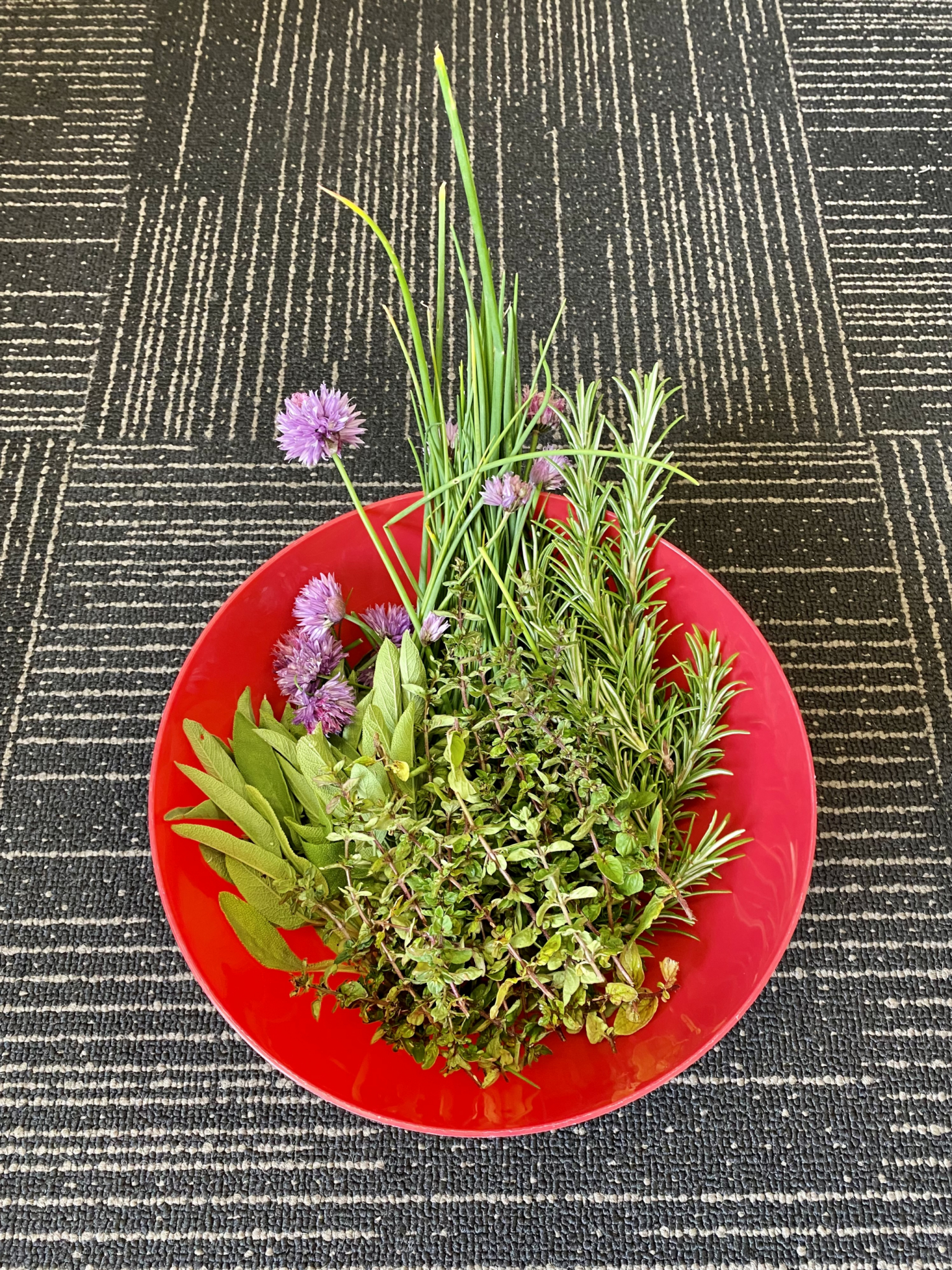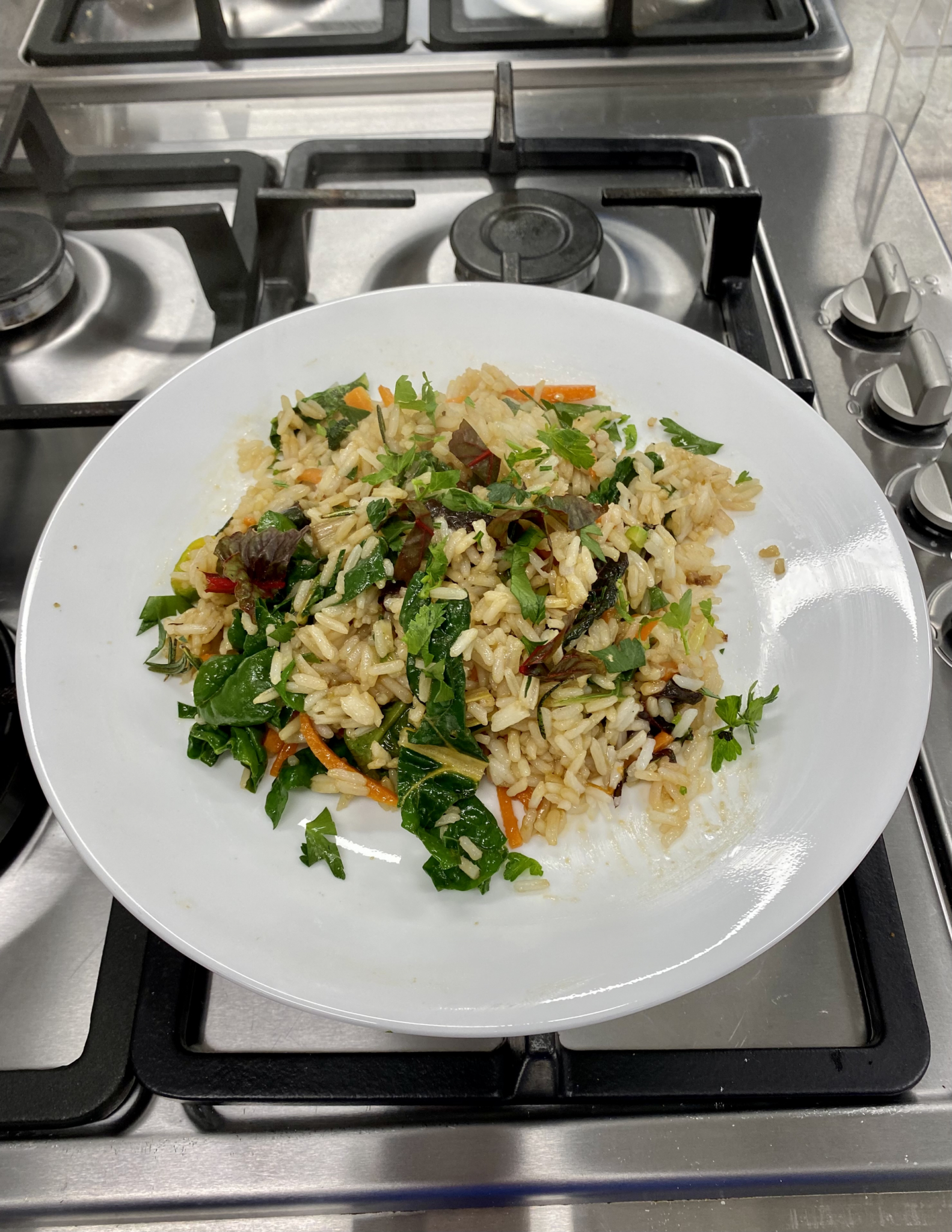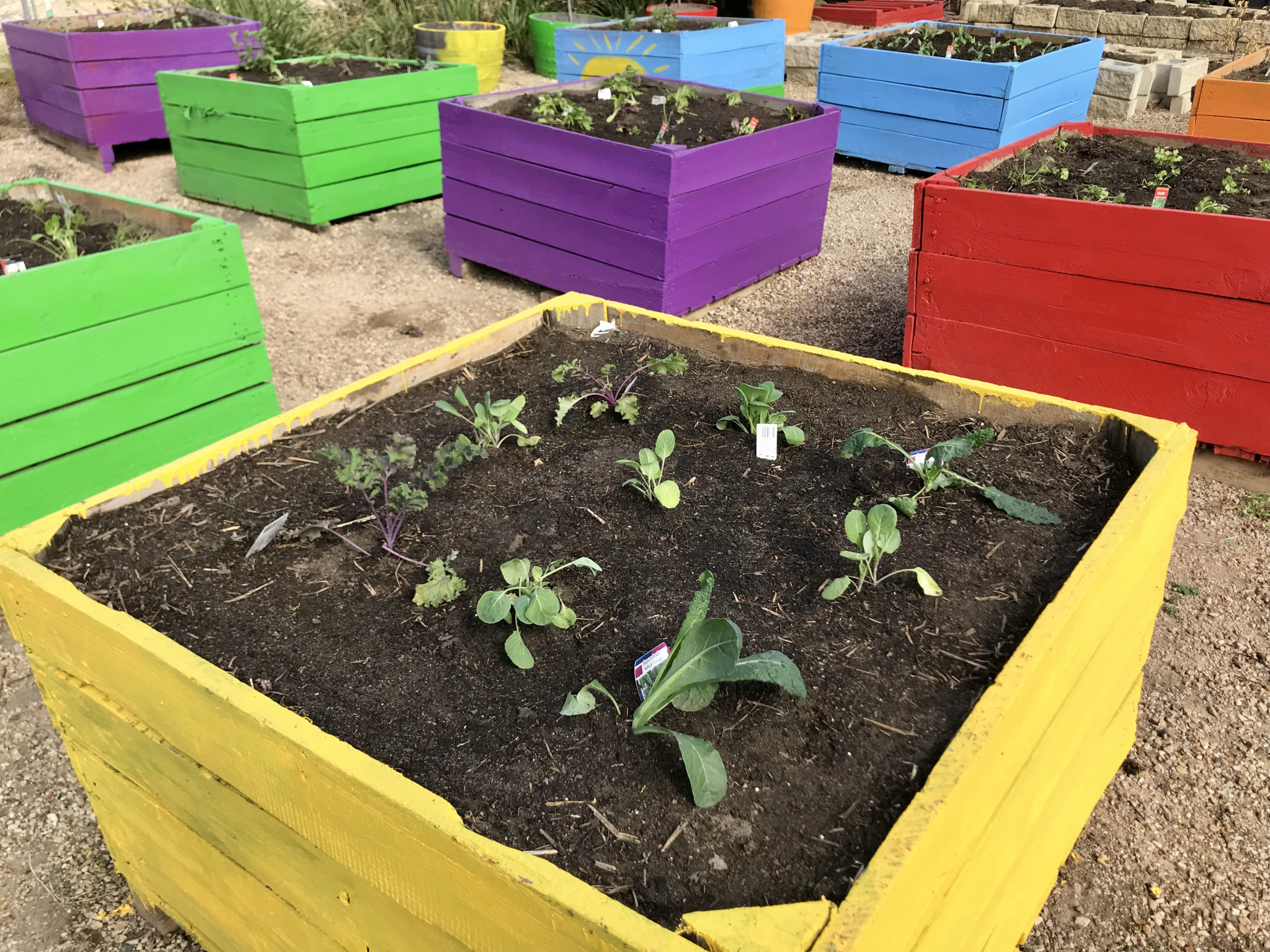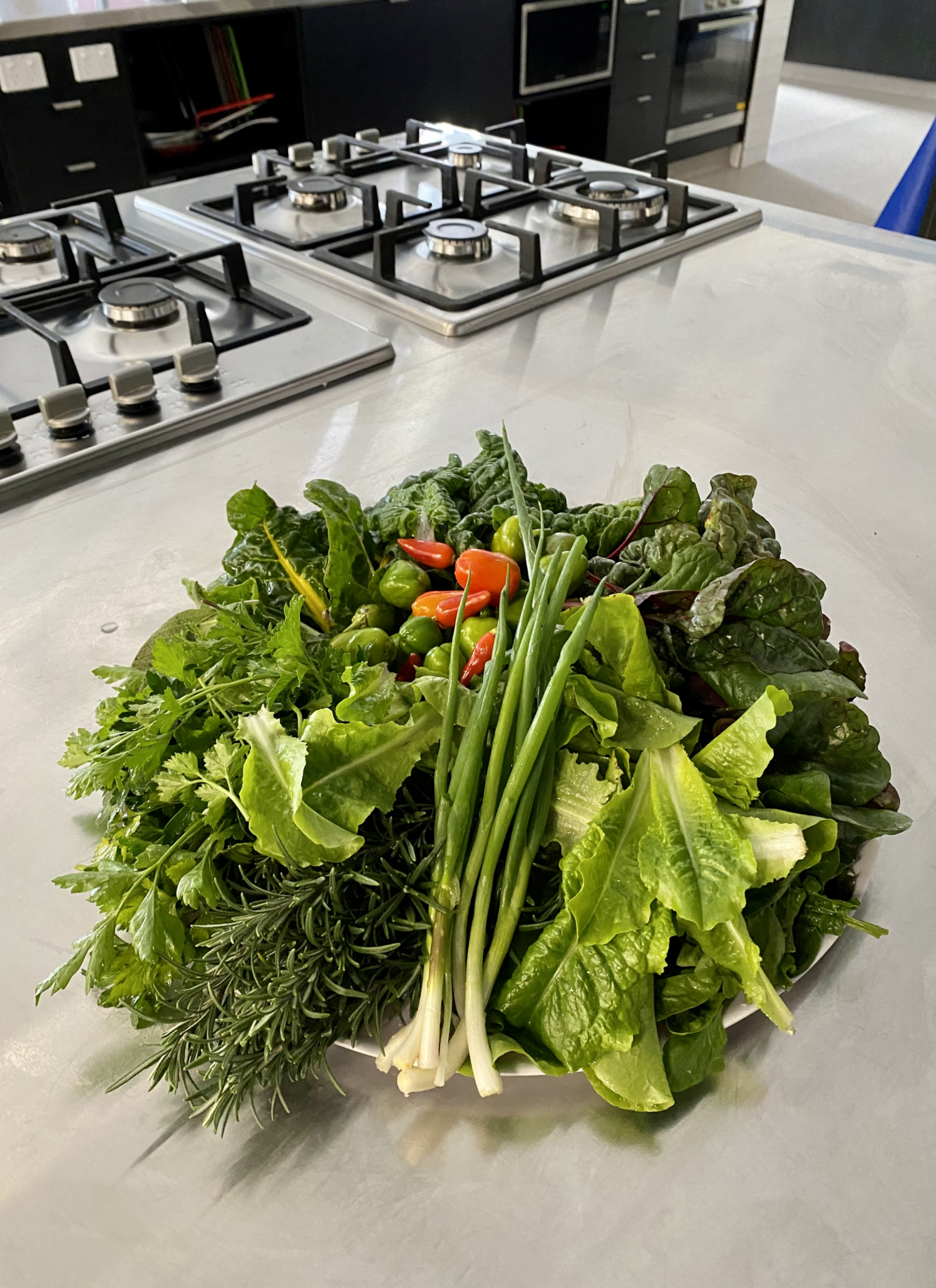
Kolbe Catholic College continues to be recognised for excellence in Learning and Teaching.
This week the Year 9 LEAD Gardening Elective features on the Stephanie Alexander Kitchen Foundation Website. The text from the article appears below.
Congratulations to Mrs Angela Mercuri, Ms Deb Bradshaw and the LEAD Team for their work within this space.
Kitchen Garden Program at a glance:
- Kolbe Catholic College runs a semester-long gardening elective for Year 9s.
- Students take part in ten 100-minute sessions, one per fortnight over the semester.
- Sessions include instruction, planning, practical gardening work, a cooking/sharing session and project work.
- Gardening sessions include 20 minutes of instruction/research/planning on a gardening topic using the Shared Table and other resources (for example, what to plant, how to plant seedlings, companion planting, watering), 50 to 60 minutes of practical gardening activities, then 20 minutes to clean up, discuss what they’ve done and plan for the next week. If it’s raining, the class might be mostly held inside with students doing research on gardening topics and creating posters for display in the classroom.
- The cooking and sharing session is run towards the end of the semester by the Food Technology teacher. The students are guided to cook a meal using produce harvested from the garden in the first period, and they then share the meal together in the second period.
- Two or three sessions are largely allocated to working on a ‘careers in gardening’ project. The students investigate three possible jobs in the gardening sector and present their findings on training requirements, what the jobs involve, salaries and job availability.
- One session is usually a garden-related excursion, for example to the Botanic Gardens to visit the kitchen garden or to a garden show like the Melbourne Flower and Garden Show, looking at landscape design and different garden plantings.
How the elective ties in with the Kitchen Garden Program
Kolbe Catholic College signed up to the Stephanie Alexander Kitchen Garden Program about four years ago. Their main motivation for joining was to get access to the program’s online gardening resources, activity sheets and ideas for curriculum links for use with this gardening elective.
Angela Mercuri, the gardening elective teacher, has found the resources really useful. She says, “It is good to be able to say to the kids – I’m sure you’ve looked at this in science, so what can you tell me about photosynthesis, for example.” She adds, “Having easy access to information that’s already been curated for you is really great.”
Resources she uses include guides like those on planting and harvesting, watering, composting and companion plants, and activity sheets, like those on planting seeds and seedlings, weeding, propagating and scarecrow-making. She says, “Normally I’d present information from the resources, for example, information on seedlings. I’d show the video on how to separate the seedlings and plant them. Then we’d chat about it, and I’d set the ground rules (important as they can get carried away out there!), before the students go out and do the planting.”
Angela notes that the activity resources they use have often been created for primary school students, but they have worked well for them, and are fantastic for use with secondary students as well.
“It is good to be able to say to the kids – I’m sure you’ve looked at this in science, so what can you tell me about photosynthesis, for example.”
What is covered in the semester of classes?
As for most schools in Victoria, the school had to adapt to Covid and run classes at home in 2020 and 2021. However, here’s a breakdown that illustrates what they might normally do (though the actual weeks they do the activities might change):
- Class 1: Preparation. They spend the first double session introducing the unit, getting to know each other and then weeding and getting the garden bed(s) ready for planting.
- Class 2: Plant selection. They look at the planting and harvesting resource and work out what best grows during the semester, starting either in February or July, and what can they then harvest in about 10 to 12 weeks’ time. They look at the companion planting resource and decide how to organise the bed, for example, planting tomatoes with basil.
- Class 3: Planting and watering. They look at how to plant seedlings and then plant out the seedlings. They also look at the watering resource and set up a schedule for students to water the garden every couple of days, with two students responsible each week. As well as the Stephanie Alexander resources and planting video, they use a Gardening Australia resource on watering, and a Bunnings video on planting. Over the years they’ve planted oregano, sage, rosemary, lots of spinach, silverbeet, spring onion, bok choy, strawberries and broccoli: the herbs and spinach have been the most successful, with many of the herbs still growing strong; broccoli was the most tricky as they lost all the plants to slugs (but there’s learning in that too!)
- Classes 4 to 6: Project work. They work on the ‘careers in gardening’ assessment task, and continue maintenance tasks in the garden, like weeding, mulching and fertilising.
- Class 7: Scarecrow making. Each year they make about four or five scarecrows using timber crosses recycled from the previous semester’s, and clothes bought from op shops. They use the Stephanie Alexander resource for this.
- Class 8: Another garden topic, like propagating, composting or making a climbing trellis.
- Class 9: Excursion
- Class 10: Cooking/sharing session. They cook with produce harvested from the garden and present any posters they’ve made. They’ve cooked vegetable fried rice, spaghetti with a vegetable tomato sauce and vegetable quiches.
Angela says it’s important to make it enjoyable and fun – it’s relaxing for many of these students to get that chance to work in the garden. “They enjoy getting to see the food growing all the way through to cooking and eating it.” She adds, “Some of the kids don’t have gardens, so that’s really important for them to see food growing rather than it just coming from the supermarket.”
“They enjoy getting to see the food growing all the way through to cooking and eating it.”
Future plans
Angela has plans to include growing from seed or propagating from cuttings (for example, rosemary softwood cuttings) to show students how easy it is and how you can save money by not having to buy seedlings. There may also be opportunities for them to take plants home, or share or sell them to the wider school community.
Another idea Angela is considering is splitting the class into groups and enabling self-directed, project-based learning to take place, with groups working on different tasks like propagation, compost management and creating trellises.






